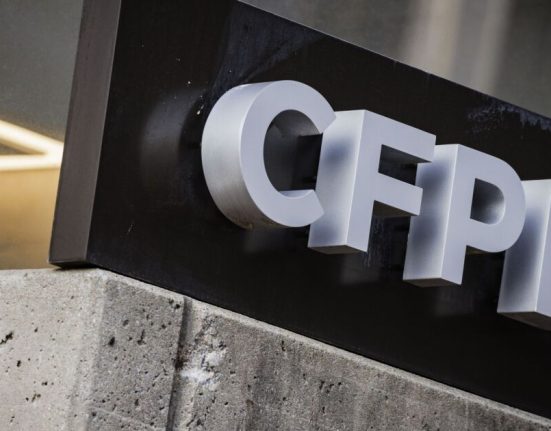The share of outstanding U.S. consumer debt that’s in delinquency rose in the first quarter to the highest in five years, reflecting an end to the pandemic-era pause on reporting delinquent student loan payments on credit reports.
Some 4.3% of debt was delinquent in the first three months of this year, the most since 2020 and up from 3.6% in the prior quarter, the New York Fed said Tuesday in its Quarterly Report on Household Debt and Credit. Outside of student loans, however, transition to early delinquency held steady for nearly all debt types.
Missing payments on federal student loans have just begun to reappear on credit reports, following a years-long payment freeze. As a result, about 8% of student debt fell into serious delinquency — or was 90 or more days late — in the first quarter, up from less than 1% a year earlier.
“Transition rates into serious delinquency have leveled off for credit card and auto loans over the past year,” Daniel Mangrum, a research economist at the New York Fed, said in a statement. “However, the first batch of past due student loans were reported in the first quarter of 2025, resulting in a large jump in seriously delinquent borrowers.”
Debt delinquency rates have been on the rise since late 2023, as consumers battled elevated inflation and high borrowing costs. Total household debt — which is primarily composed of mortgages, student loans, auto loans and credit-card balances — increased by $167 billion in the first quarter to a record $18.2 trillion.
A pause on federal student loan payments gave some borrowers breathing room to pay off other debt and improve their credit scores. But now that those payments are once again being reported to credit bureaus, student loan delinquencies have returned more toward pre-pandemic levels, the New York Fed found.
Student Loan Outlook
More than half the borrowers who are newly delinquent on student loans had subprime credit scores in the fourth quarter of last year, according to the New York Fed. But 2.4 million borrowers, or 43% of the newly delinquent, had credit scores at or above 620.
“Many would have qualified for new auto, mortgage and credit cards before those delinquencies were reported,” New York Fed researchers wrote in a blog post Tuesday.
It’s not clear where student loan delinquencies will go from here. While they could rise further, it’s also possible that some borrowers may start making payments after seeing the student loans ding their credit report, the researchers said.
In the aggregate, the researchers said household balance sheets look good. Credit card balances fell from the previous quarter, as is typical at the start of the year as people pay off debt incurred over the holidays. But auto loan balances unexpectedly declined, the first such drop since the third quarter of 2020.
Even so, the share of credit card debt that is 90 or more days delinquent climbed to 12.3% in the first quarter, the most since 2011.







